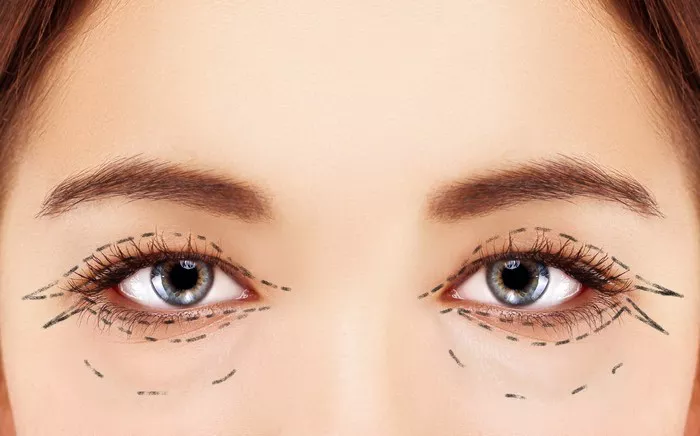Lower blepharoplasty, commonly known as eyelid surgery, is a cosmetic procedure aimed at rejuvenating the lower eyelids. It involves removing excess skin, fat, and tightening the muscles around the eyes to achieve a more youthful and rested appearance. However, like any surgical procedure, it is essential to weigh the benefits against the potential risks and costs. So, is lower blepharoplasty worth it? Let’s delve into the topic and explore its various aspects.
Understanding Lower Blepharoplasty
Before determining whether lower blepharoplasty is worth it, it is crucial to understand the procedure and its intended outcomes. Lower blepharoplasty primarily targets concerns such as under-eye bags, puffiness, loose skin, and dark circles. These cosmetic issues can make individuals appear tired, older, or even perpetually sad.
During the surgery, an incision is made either just below the lower lash line or on the inside of the eyelid. The surgeon then removes or redistributes excess fat, tightens the muscles, and trims away any redundant skin. The goal is to achieve a smoother, more youthful contour around the eyes.
Benefits of Lower Blepharoplasty
Lower blepharoplasty offers several potential benefits to individuals considering the procedure. Here are some of the advantages:
Improved Appearance: One of the primary reasons people opt for lower blepharoplasty is to improve their overall appearance. By reducing under-eye bags, puffiness, and loose skin, the surgery can restore a more youthful and refreshed look.
Boost in Self-Confidence: Addressing cosmetic concerns can have a profound impact on an individual’s self-esteem and self-confidence. Lower blepharoplasty can help individuals feel more comfortable and confident in their own skin.
Rejuvenated Facial Expressions: The eyes are a prominent feature of the face and play a crucial role in facial expressions. Lower blepharoplasty can soften the appearance of tired or sad eyes, giving individuals a more vibrant and alert look.
Long-Lasting Results: While lower blepharoplasty does not stop the natural aging process, its results can be long-lasting. The removal of excess skin and fat typically produces enduring improvements, allowing individuals to enjoy the benefits of the surgery for many years.
Potential Functional Benefits: In some cases, lower blepharoplasty can also have functional benefits. For individuals with significant under-eye bags or loose skin, the surgery can alleviate visual obstructions and improve peripheral vision.
Considerations and Potential Risks
While lower blepharoplasty can deliver satisfying results, it is essential to consider the potential risks and limitations of the procedure. Here are some factors to keep in mind:
Surgical Risks
As with any surgery, there are inherent risks involved in lower blepharoplasty. These risks include bleeding, infection, adverse reactions to anesthesia, scarring, and asymmetry. It is crucial to discuss these risks with a qualified plastic surgeon before making a decision.
Recovery Period
Lower blepharoplasty requires a recovery period during which individuals may experience swelling, bruising, and discomfort. It is important to follow post-operative instructions and allow sufficient time for healing before expecting to see the final results.
Individual Variation
While lower blepharoplasty can produce remarkable results for many individuals, it is essential to recognize that each person’s anatomy and healing process are unique. The outcome of the surgery may vary from person to person, and it is important to have realistic expectations.
Cost Considerations
Lower blepharoplasty is a surgical procedure and can be expensive. It is important to factor in the cost of the surgery, including surgeon fees, anesthesia, facility charges, and potential follow-up visits. Additionally, insurance usually does not cover the procedure unless there is a functional component involved.
Non-Surgical Alternatives
In some cases, non-surgical alternatives such as dermal fillers or laser treatments may offer a viable option for addressing under-eye concerns. These alternatives may be less invasive, have shorter recovery times, and potentially lower costs. It is worth discussing these options with a qualified professional to determine the best course of action for individual circumstances.
Consultation with a Qualified Professional
Making an informed decision about whether lower blepharoplasty is worth it requires consulting with a qualified plastic surgeon or oculoplastic specialist. These professionals can evaluate an individual’s specific concerns, overall health, and expectations to provide personalized advice and recommendations. They can discuss the potential benefits, risks, and limitations of the procedure based on the individual’s unique circumstances.
During the consultation, it is crucial to ask questions, review before and after photos, and understand the surgeon’s experience and qualifications. This process will help individuals gain a comprehensive understanding of the procedure and make an informed decision regarding their personal goals and preferences.
Conclusion
Determining whether lower blepharoplasty is worth it depends on individual circumstances, preferences, and expectations. The procedure can provide significant aesthetic and psychological benefits, improving the appearance of the lower eyelids and boosting self-confidence. However, it is crucial to consider the potential risks, recovery period, and costs associated with the surgery. Consulting with a qualified professional will help individuals make an informed decision and choose the most suitable approach to achieve their desired outcomes. Ultimately, the decision to undergo lower blepharoplasty should be made after careful consideration and a thorough understanding of the procedure.

